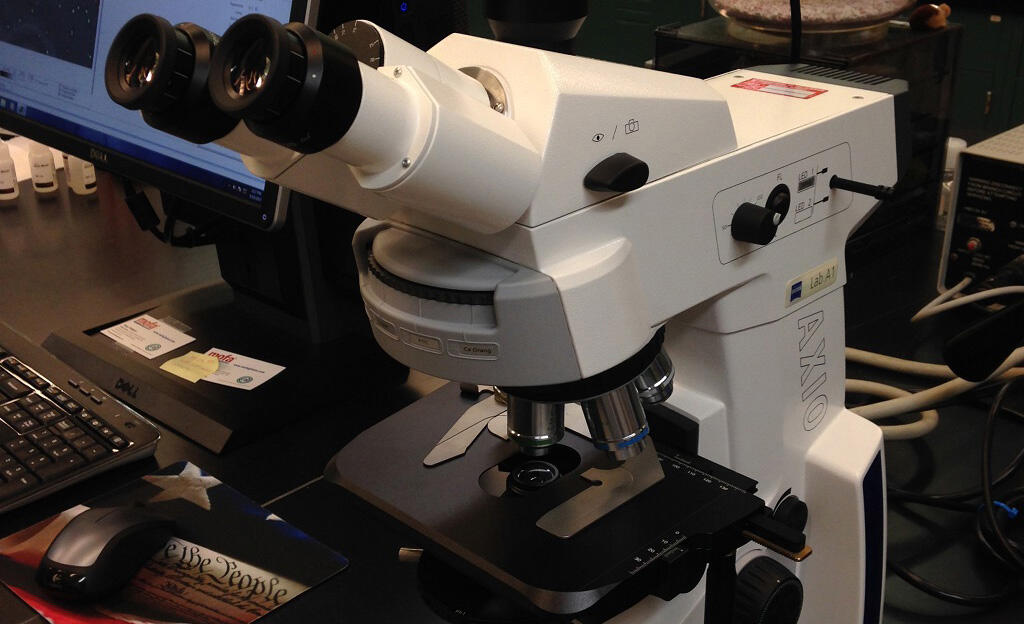Laboratory Capabilities @ MD-DE-DC
The labs at the MD-DE-DC WSC are clean, well-stocked, and appointed with modern equipment and a highly talented staff. The three labs analyze samples, conduct controlled-environment chemical tests with GCMS in the Water Qualty lab. Scientists and technicians work with core samples and analyze soils in the Sediment Lab.
Our labs assure reliability, reproducibility, and high quality of its data and information through adherence to USGS Fundamental Science Practices for publications. The use of comprehensive internal and external QA/QC processes to monitor method and analyst performance insure that our labs meet their commitment to publish high quality data of known and documented quality. External, independent oversight is provided by the USGS Branch of Quality Services as our labs are inspected by USGS qualified safety professionals.
There will be a lot more information specific to the labs at the MD-DE-DC WSC coming to this site very soon!
Some specialized USGS laboratories across the United States
















Below are some of the related science elements closely related to Lab Analysis in our WSC
Water Quality Sampling in NWIS: MD DE DC
Analytical Chemistry
Core Technology Team
Chemists and hydrologists develop targeted analytical methods for the quantitation of chemicals that can impact the health of organisms and humans. Here are some publications about studies that were completed at the MD-DE-DC WSC with help from the scientists in our labs...
Methods of analysis by the U.S. Geological Survey National Water Quality Laboratory-Processing, taxonomy, and quality control of benthic macroinvertebrate samples
Analytical properties of some commercially available nitrate reductase enzymes evaluated as replacements for cadmium in automated, semiautomated, and manual colorimetric methods for determination of nitrate plus nitrite in water
Interpreting and Reporting Radiological Water-Quality Data
Determination of human-health pharmaceuticals in filtered water by chemically modified styrene-divinylbenzene resin-based solid-phase extraction and high-performance liquid chromatography/Mass Spectrometry
Methods of analysis by the U.S. Geological Survey National Water Quality Laboratory-Determination of whole-water recoverable arsenic, boron, and vanadium using inductively coupled plasma-mass spectrometry
Below are FAQ associated with this project.
How frequently are volatile organic compounds (VOCs) detected in groundwater?
Volatile organic compounds (VOCs), which are widely used in the manufacture of many products including refrigerants, plastics, adhesives, paints, and petroleum products, have been detected in about one-third of the wells sampled by the National Water-Quality Assessment (NAWQA) Program of the USGS. Chloroform and other trihalomethanes, the most commonly detected compounds, were found in about 9...
Does the use of pesticides affect our Nation's water quality?
Pesticide use in the United States has increased because not only must we supply our exploding population with food, but crops and food are also grown for export to other countries. The United States has become the largest producer of food products in the world, partly owing to our use of modern chemicals (pesticides) to control the insects, weeds, and other organisms that attack food crops. But...
The labs at the MD-DE-DC WSC are clean, well-stocked, and appointed with modern equipment and a highly talented staff. The three labs analyze samples, conduct controlled-environment chemical tests with GCMS in the Water Qualty lab. Scientists and technicians work with core samples and analyze soils in the Sediment Lab.
Our labs assure reliability, reproducibility, and high quality of its data and information through adherence to USGS Fundamental Science Practices for publications. The use of comprehensive internal and external QA/QC processes to monitor method and analyst performance insure that our labs meet their commitment to publish high quality data of known and documented quality. External, independent oversight is provided by the USGS Branch of Quality Services as our labs are inspected by USGS qualified safety professionals.
There will be a lot more information specific to the labs at the MD-DE-DC WSC coming to this site very soon!
Some specialized USGS laboratories across the United States
















Below are some of the related science elements closely related to Lab Analysis in our WSC
Water Quality Sampling in NWIS: MD DE DC
Analytical Chemistry
Core Technology Team
Chemists and hydrologists develop targeted analytical methods for the quantitation of chemicals that can impact the health of organisms and humans. Here are some publications about studies that were completed at the MD-DE-DC WSC with help from the scientists in our labs...
Methods of analysis by the U.S. Geological Survey National Water Quality Laboratory-Processing, taxonomy, and quality control of benthic macroinvertebrate samples
Analytical properties of some commercially available nitrate reductase enzymes evaluated as replacements for cadmium in automated, semiautomated, and manual colorimetric methods for determination of nitrate plus nitrite in water
Interpreting and Reporting Radiological Water-Quality Data
Determination of human-health pharmaceuticals in filtered water by chemically modified styrene-divinylbenzene resin-based solid-phase extraction and high-performance liquid chromatography/Mass Spectrometry
Methods of analysis by the U.S. Geological Survey National Water Quality Laboratory-Determination of whole-water recoverable arsenic, boron, and vanadium using inductively coupled plasma-mass spectrometry
Below are FAQ associated with this project.
How frequently are volatile organic compounds (VOCs) detected in groundwater?
Volatile organic compounds (VOCs), which are widely used in the manufacture of many products including refrigerants, plastics, adhesives, paints, and petroleum products, have been detected in about one-third of the wells sampled by the National Water-Quality Assessment (NAWQA) Program of the USGS. Chloroform and other trihalomethanes, the most commonly detected compounds, were found in about 9...
Does the use of pesticides affect our Nation's water quality?
Pesticide use in the United States has increased because not only must we supply our exploding population with food, but crops and food are also grown for export to other countries. The United States has become the largest producer of food products in the world, partly owing to our use of modern chemicals (pesticides) to control the insects, weeds, and other organisms that attack food crops. But...





